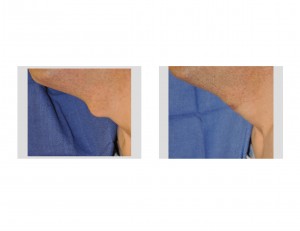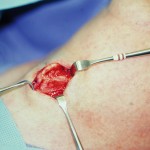The reduction of a prominent Adam’s Apple through a procedure known as a tracheal or laryngeal shave has been in the news lately. Former Olympic Gold Medalist Bruce Jenner has recently made headlines for purportedly undergoing the procedure and the tabloids have suggested that he may be in a transitional state to becoming a women. While I have no idea about whether he has that procedure and his motivation for doing so if he had, invariably a tracheal shave is almost always associated with facial feminization surgery. FFS()
The reality is, however, that tracheal shaves are not done exclusively in FFS. As many non-transgender patients, usually men, have them done as often as transgender patients. I have men with very large laryngeal prominences that have trouble buttoning a shirt or wearing a tie. Most are just bothered by this large unnatural looking projection in their neck. Less frequently, women may have it done for the same aesthetic concerns although their natural hormonal levels usually preclude it from ever developing that large.

How aggressive one can be with tracheal shave reduction depends on how they balance the risk factors of entering the airway and destabilizing the larynx and causing voice changes. Some prefer to do it under fiberoptic larnygeal visualization of the vocal cords and the anterior mucosal wall. Others use conservative intraoperative judgment and gently dissect off the mucosal lining and thyrohyoid ligament from the inner cartilage surface of the laryngeal prominence of the thyroid cartilage to allow for maximal reduction. Revisions of tracheal shaves are probably best done under visualization of teh airway.

Most laryngeal prominences can be reduced as the same implies (tracheal shave) by using a scalpel to shave the prominences down. However, some patients will have stiffer cartilage that may be partially ossified. In these cases, scalpel will not make a dent in it. This usually occurs after some shaving has been done and the stiffer cartilage is revealed underneath. A handpiece and a small rotary burr can complete the reduction is a controlled manner.
The vast majority of tracheal shaves patients are satisfied with their initial operation. It does take a few months for all the laryngeal swelling goes down to see the final result. Some do wish that more could have been removed but accept that there are limits based on their anatomy and remain satisfied with an uncomplicated and improved neck result.
Dr. Barry Eppley
Indianapolis, Indiana


